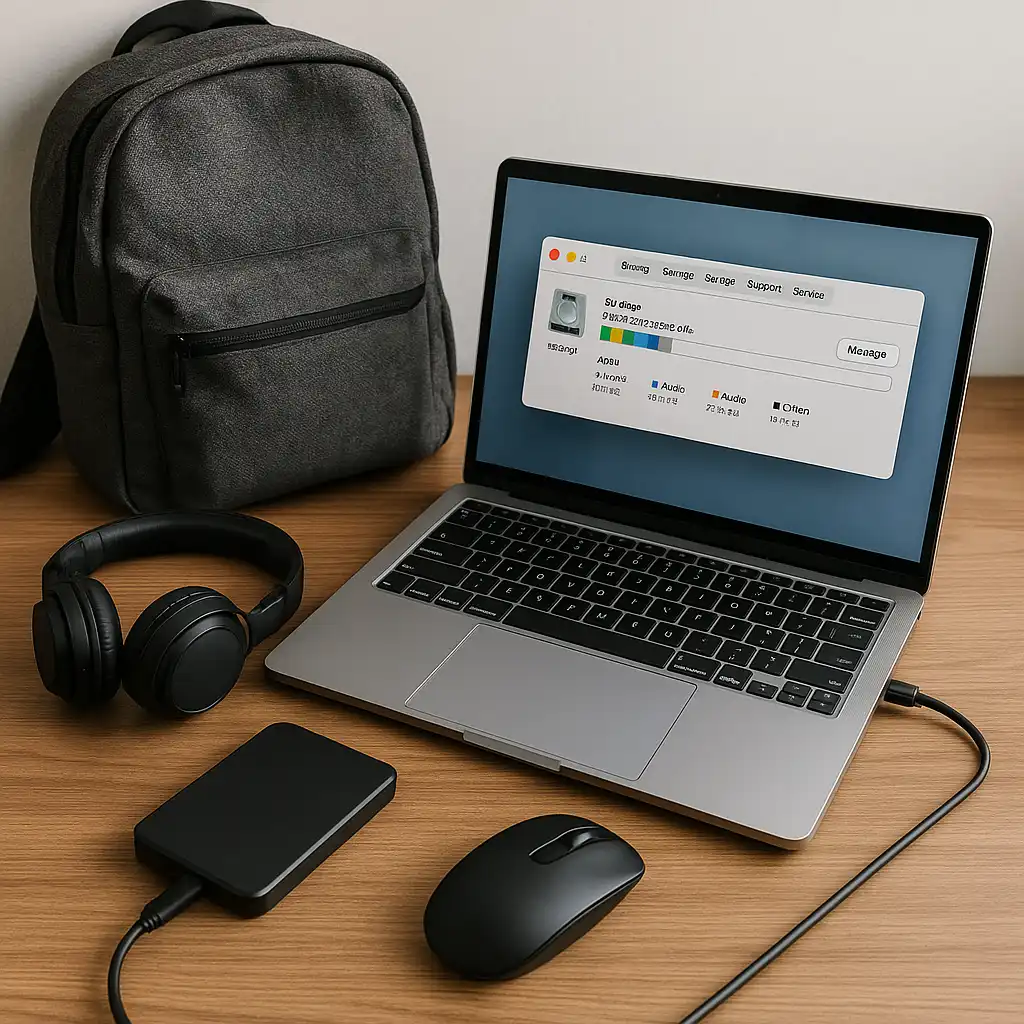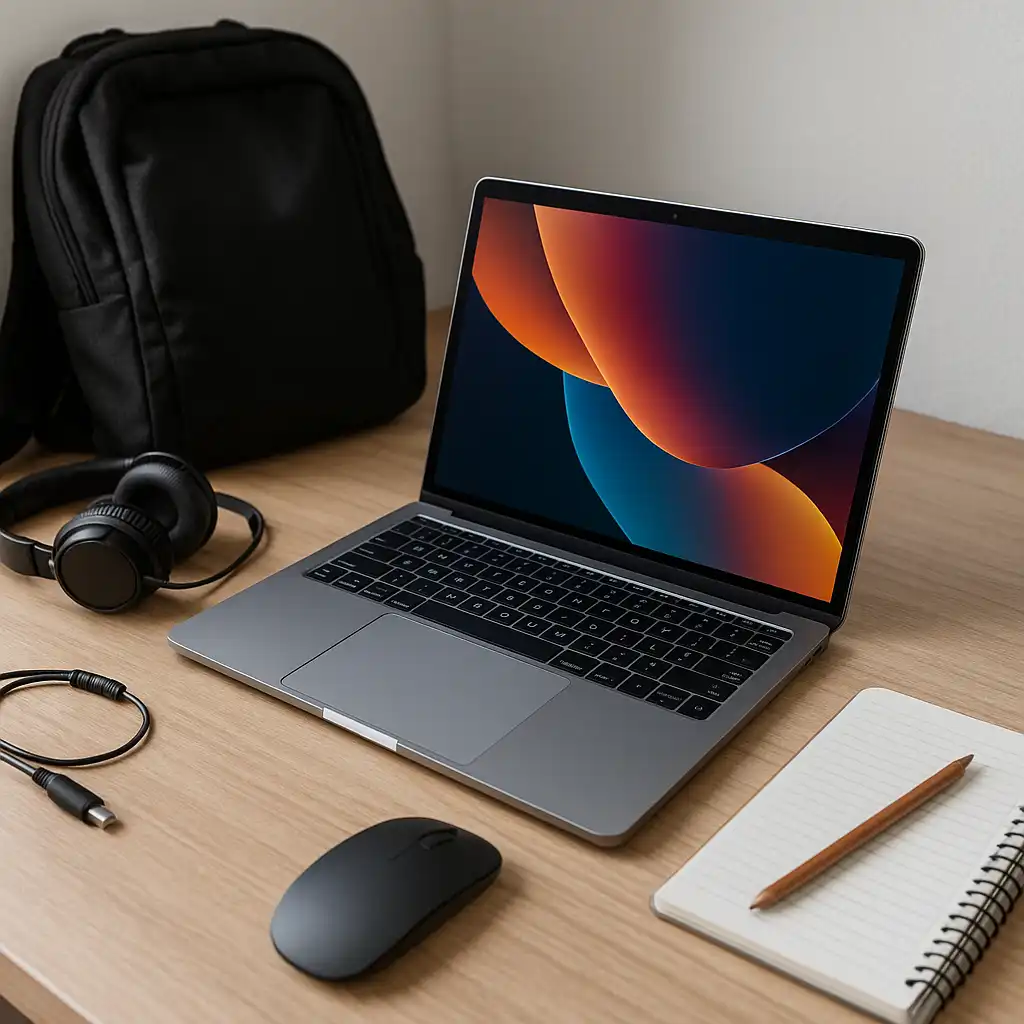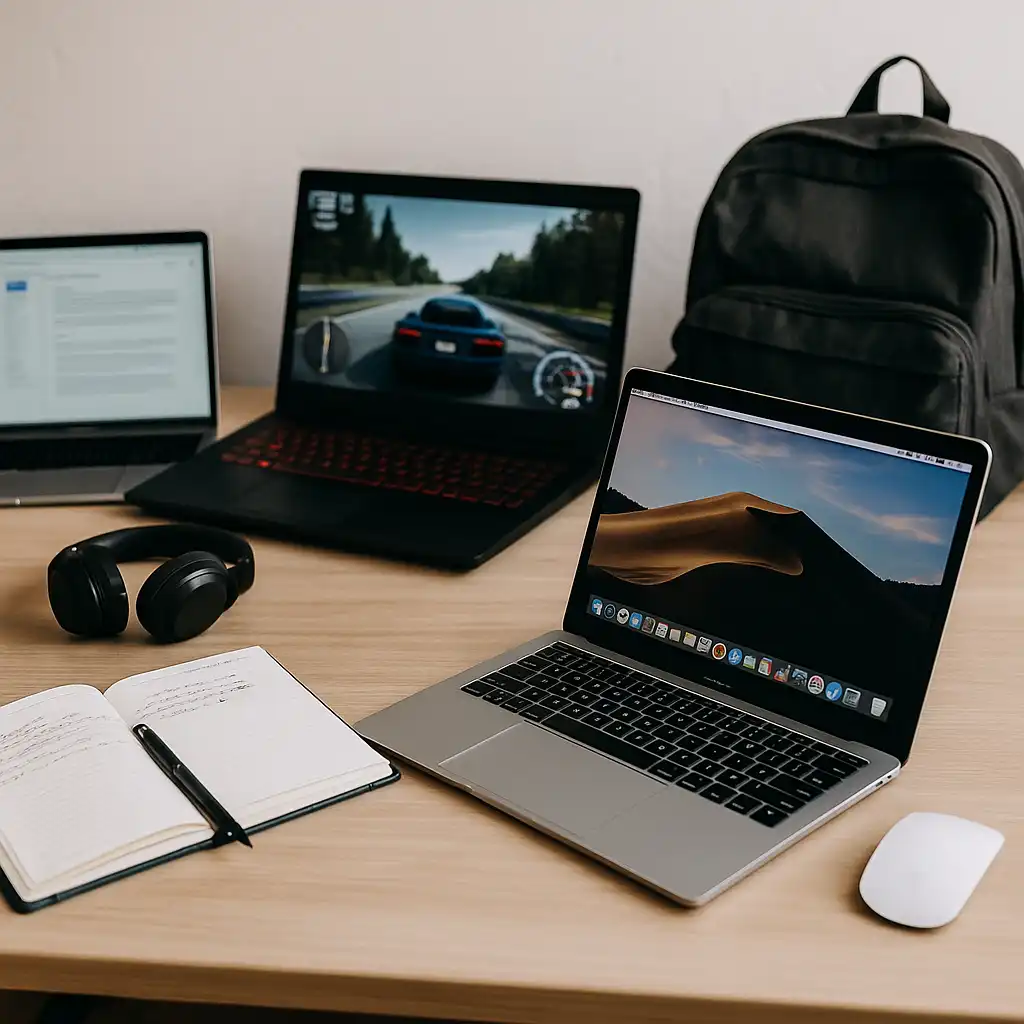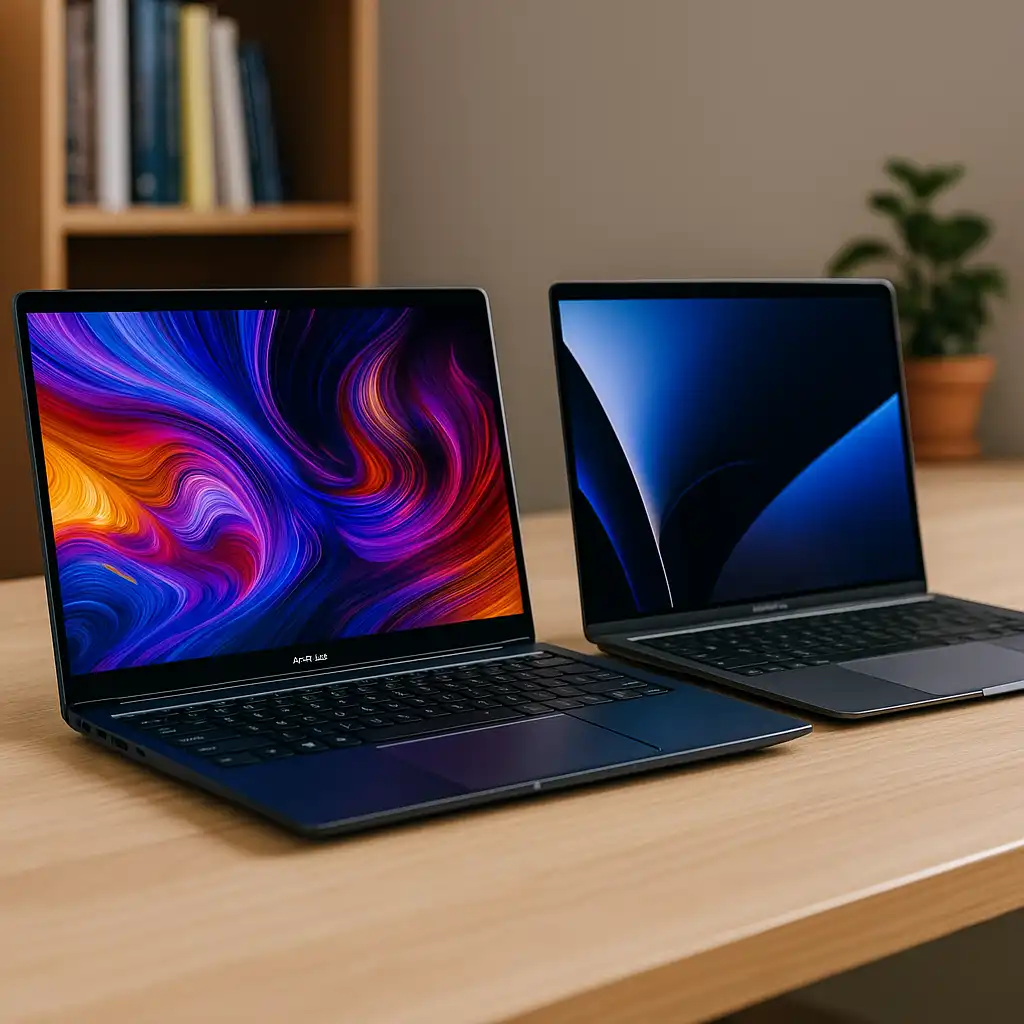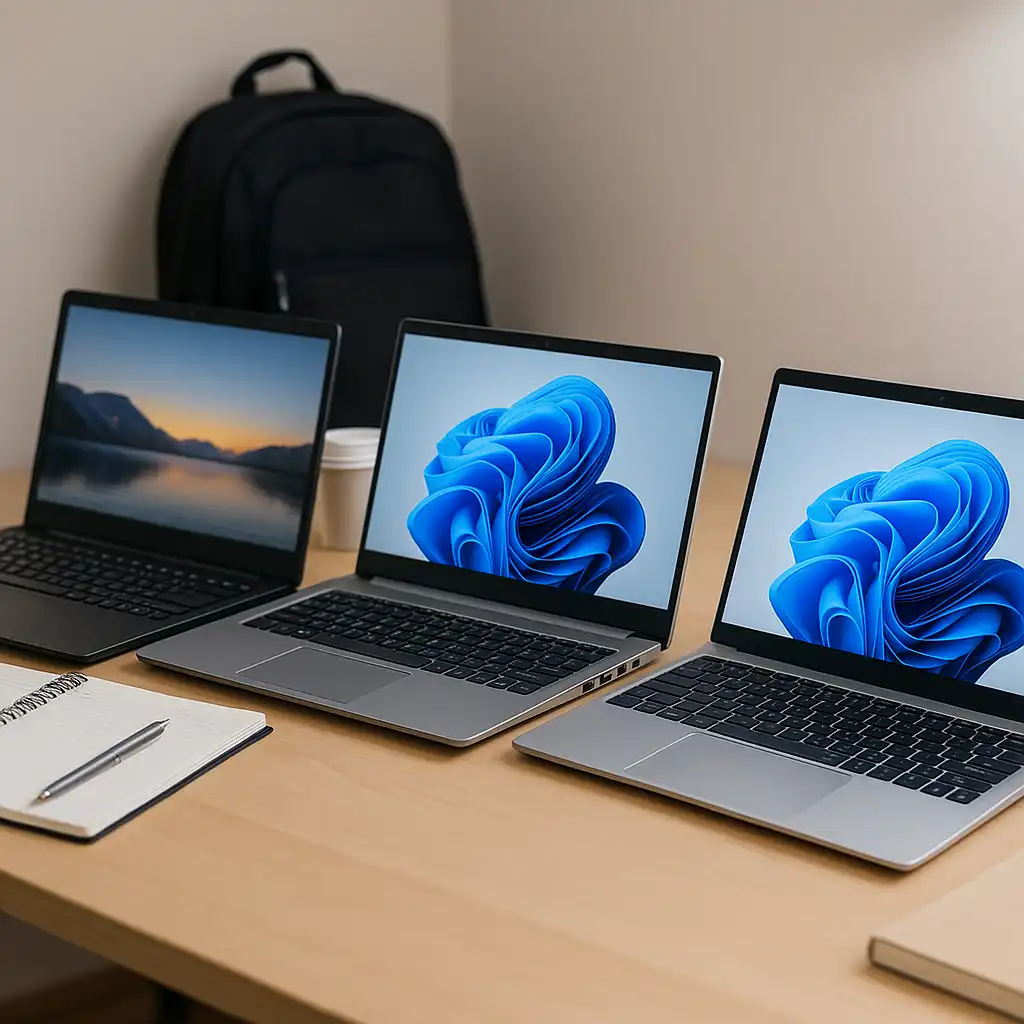How Much Storage Does a Student Need on a Laptop: Simple Guide
Disclosure: This post contains affiliate links. LaptopVoyager.com participates in the Amazon Associates Program and may earn commissions on qualifying purchases, at no extra cost to you.
Last Updated: September 26, 2025
When you’re shopping for a laptop as a student, storage can be one of the trickiest specs. Some models come with just 128GB, while others go up to a full terabyte or more. Too little space means running out quickly, while too much often means overspending. The right balance will keep your laptop running smoothly and save you from storage headaches during the school year.
👉 For a full breakdown of budget-friendly and high-performance options, check our guide on the best laptops designed with students in mind.
🔍 Why Storage Matters for Students
Storage decides how much you can keep directly on your laptop—class notes, essays, presentations, and maybe a collection of movies or games. SSD storage is standard now, giving faster boot times and smoother overall performance than old hard drives.
The real challenge is figuring out how much you’ll actually use. Too little space leaves you constantly deleting files. Too much, and you’re paying for storage you’ll never touch.
🔍 How Much Storage Is Enough?
For most students, 256GB SSD is the minimum. It’s enough for schoolwork, apps, and casual media, especially if you use cloud services. If you download videos, store big projects, or run programs like Photoshop or AutoCAD, 512GB is the safer pick. Creative majors dealing with heavy media files will benefit most from 1TB or more.
Cloud storage—Google Drive, OneDrive, Dropbox—can help, but it requires reliable internet and sometimes a subscription. A smart rule is to choose storage based on your daily workflow, not just the biggest number on the spec sheet.
Real Models & Trends
Many student-oriented laptops in 2025 ship with 512 GB SSDs, reflecting that it’s become a practical baseline. For example, the Dell XPS 13 (9345) is offered in a configuration featuring 512 GB SSD with 16 GB RAM, with higher-end versions pushing up to 1 TB. Dell
Some review tests of “best student laptops” also highlight 512 GB configurations as balancing performance and storage for everyday media, software, and coursework. Business Insider
🔍 Common Mistakes Students Make About Storage
A big mistake is going with 128GB just to save money. Once the operating system and apps eat up space, you’ll have very little left. Another is assuming everyone needs 1TB. Unless you’re in a field that creates massive files, most students won’t come close to filling that much.
Depending only on external hard drives can be another trap. They’re fine for backups but clunky for everyday use, and they’re slower than built-in SSD storage.
🔍 Balancing Storage With Budget
Don’t stress if you can’t afford the highest storage tier. A 256GB or 512GB SSD paired with free student cloud storage is enough for most. Many universities even provide accounts with large cloud limits at no extra cost.
Budget laptops often cut corners with storage, but paying a little more for at least 256GB will give you more breathing room and extend the life of your laptop.
👉 Need extra space for big files? Check our guide on the best external hard drives for storing photos.
📌 Key Takeaways
- 256GB SSD is the starting point for most students.
- 512GB is the sweet spot for bigger projects or extra flexibility.
- 1TB+ makes sense only for majors working with large media files.
- Cloud storage is helpful, but you still need enough onboard space.
🟢 FAQs
Q: Is 128GB enough for a student laptop?
Not really. Once the system and apps are installed, you’ll have very little usable space left. Most students will run into problems quickly.
Q: Do I need 1TB of storage as a student?
Only if you’re studying in fields like design, film, or architecture. For most students, 256GB or 512GB is plenty.
Q: Can cloud storage replace laptop storage?
It’s a good backup but not a replacement. You’ll still want enough internal storage for files and apps when you’re offline.
✅ Conclusion
So, how much storage does a student need on a laptop? For most, 256GB is the starting point, 512GB is the sweet spot, and 1TB or more is only necessary for creative fields. Choosing wisely helps your laptop last through school without slowing you down—or draining your budget.

